How to Choose the Best Juicer with Warranty

When I shop for kitchen gadgets, I always think about what happens if something goes wrong. That’s why choosing a juicer with warranty coverage makes so much sense. It’s not just about protection; it’s about peace of mind. Nearly 70% of shoppers feel the same way, considering warranty terms as a top priority. A juicer with a warranty can save you money in the long run, especially if repairs or replacements are needed. Plus, brands with strong customer service often keep customers happy, with retention rates up to 50% higher. Trust me, picking the right juicer isn’t just about features—it’s about making a smart, secure choice.
Key Takeaways
-
Pick a juicer with a warranty to cover defects and feel secure.
-
A longer warranty shows the maker trusts the juicer's strength.
-
Spending more on a good juicer can save repair money later.
-
Find juicers made of strong materials like stainless steel to last longer.
-
Check for features like different speeds and easy cleaning for better use.
-
Read customer reviews to learn about performance and warranty experiences.
-
Always check the warranty to know what it covers and how long it lasts.
-
Try the juicer in-store with different foods to see if it works for you.
Why a Juicer with Warranty is Essential
Protection Against Defects
When I buy a juicer, I want to know it’s built to last. But let’s face it—sometimes things go wrong. That’s where a warranty steps in. It’s like a safety net, protecting you from unexpected defects. Imagine spending hundreds of dollars on a juicer, only to have it stop working after a few months. Frustrating, right? A long warranty ensures that if something breaks due to a manufacturing issue, you won’t have to pay out of pocket for repairs or replacements. It’s a sign that the manufacturer stands behind their product, which gives me confidence in its quality.
In fact, studies show that having a long warranty for juicers is crucial. It reassures buyers that the product is reliable and worth the investment. High-quality juicers often come with warranties lasting two years or more, which signals the manufacturer’s trust in their product’s durability. For me, that’s a big deal. It’s like the company is saying, “We’ve got your back.”
Peace of Mind for Buyers
Let’s be honest—buying a juicer isn’t a small decision. It’s an investment in your health and lifestyle. That’s why I always look for a juicer with warranty coverage. Knowing that I’m protected if something goes wrong makes the purchase feel less risky. It’s like having a little extra insurance for my peace of mind.
Consumer surveys back this up. They show that warranties significantly improve buyer confidence. When a juicer comes with an extensive warranty, it tells me the manufacturer believes in their product. And that belief rubs off on me. I feel reassured that I’m making a smart choice, not just a gamble. Plus, juicers with longer warranties tend to perform better over time, which means fewer headaches for me down the road.
Long-Term Cost Savings
Here’s the thing—buying a cheap juicer might save you money upfront, but it could cost you more in the long run. I’ve learned this the hard way. A budget juicer I bought for $80 barely lasted a year. Meanwhile, a higher-quality model with a warranty might cost $300, but it’s built to last. Over time, that’s a smarter investment.
Warranties also help save money by covering repairs and replacements. And if you choose an energy-efficient juicer, you’ll save on electricity bills too. For example, cold-press juicers can reduce energy consumption by up to 15%. That’s a win for your wallet and the environment. Investing in a juicer with warranty coverage isn’t just about protection—it’s about making a choice that pays off in the long run.
Key Features of the Best Juicer
Durability and Build Quality
When I shop for a juicer, I want something that can handle daily use without falling apart. Durability is a must. A well-built juicer not only lasts longer but also performs better over time. I always look for models with sturdy materials like stainless steel or BPA-free plastics. These materials resist wear and tear, ensuring the juicer stays in great shape.
Many top-rated juicers undergo strict quality checks during production. These tests ensure the product meets high standards for safety and performance. Some even have international certifications to prove their reliability. That’s a big plus for me because it shows the manufacturer takes quality seriously.
Here’s a quick comparison of features that contribute to durability:
|
Feature |
Description |
|---|---|
|
Motor |
900-Watt motor with double ball bearing technology for low maintenance. |
|
Warranty |
1-Year warranty ensuring product quality and durability. |
|
Durability |
Built to last with a 2-Year product warranty and 5-Year motor warranty. |
A juicer with a strong motor and a solid warranty gives me confidence. It’s like having a safety net for my investment.
Performance and Efficiency
Performance is another key factor I consider. A juicer should extract the maximum amount of juice from fruits and vegetables. High yield is important to me because it means less waste and more fresh-pressed juice for my family. I’ve noticed that juicers with powerful motors and efficient designs tend to deliver better results.
For example, some models can run for 90 minutes straight without overheating. That’s perfect for making large batches of juice. Plus, commercial-grade motors, like those with 2.2 HP, ensure smooth operation and reliability. Here’s a quick look at how some juicers stack up:
|
Juicer Model |
Weight |
Dimensions |
Noise Level |
Warranty |
|---|---|---|---|---|
|
Black+Decker CJ625 |
2 pounds |
7.68 x 7.68 x 9.5 in |
Loud |
2 years |
|
Vinci Hands-Free Electric Citrus Juicer |
4.31 pounds |
7 x 8.5 x 12.5 in |
Moderately loud |
1-year limited |
I also pay attention to energy efficiency. Cold-press juicers, for instance, use less power while delivering nutrient-rich juice. That’s a win for both my wallet and my health.
Ease of Use and Cleaning
Let’s be real—nobody wants a juicer that’s a pain to use or clean. I always check how easy it is to assemble and operate a juicer. Simple controls and clear instructions make a big difference. Some juicers even have one-touch operation, which is a lifesaver on busy mornings.
Cleaning is another deal-breaker for me. A juicer that’s easy to clean saves time and effort. I look for models with dishwasher-safe parts or self-cleaning functions. Trust me, it’s worth it. Spending less time scrubbing means more time enjoying fresh-pressed juice.
Here are a few tips I’ve learned:
-
Choose a juicer with fewer parts. It’s easier to clean and reassemble.
-
Look for a wide feeding chute. It reduces prep time by fitting whole fruits and veggies.
-
Check if the juicer comes with a cleaning brush. It’s handy for reaching tight spots.
An easy-to-clean juicer makes the whole experience more enjoyable. It’s one of the reasons I always read reviews before buying. Happy customers often mention how simple it is to clean their juicer.
Additional Features
When I’m shopping for the best juicer, I always look for those extra features that make life easier. These little details can turn a good juicer into a great one. Let me share some of the additional features I’ve found helpful.
1. Multiple Speed Settings
Not all fruits and veggies are created equal. Some are soft, like berries, while others, like carrots, are tough. That’s why I love juicers with multiple speed settings. A low speed works wonders for soft produce, while a high speed tackles harder ingredients. This flexibility ensures I get a high yield from everything I juice. Plus, it helps me avoid wasting ingredients, which is a win for my wallet.
2. Pulp Control Options
I’ll admit it—I’m picky about my juice. Sometimes I want smooth, pulp-free juice, and other times I don’t mind a little texture. That’s why I appreciate juicers with adjustable pulp control. Some models even come with separate pulp containers, making it easy to customize the juice to my liking. It’s like having a juicer that adapts to my mood.
3. Juice Storage Containers
A built-in juice container is a game-changer. It keeps the fresh-pressed juice from spilling all over my counter. Some juicers even include containers with measurement markings, which is super handy when I’m following a recipe. I also look for containers with lids, so I can store juice in the fridge without transferring it to another bottle.
4. Anti-Drip Spout
Have you ever finished juicing, only to find sticky juice dripping onto your counter? It’s the worst. That’s why I always check for an anti-drip spout. This feature stops the flow of juice when I’m done, keeping my kitchen clean. It’s a small detail, but it makes a big difference.
5. Quiet Operation
Nobody wants to wake the whole house while making juice in the morning. Some juicers are surprisingly loud, but others are designed for quiet operation. I’ve found that cold-press juicers tend to be quieter than centrifugal ones. If noise is a concern, it’s worth checking the product specs or reading reviews to find a quieter model.
6. Safety Features
Safety is a big deal for me, especially when using a powerful machine like a juicer. I always look for features like non-slip feet, overload protection, and automatic shut-off. These features not only protect me but also extend the life of the juicer. It’s a win-win.
7. Compact Design
Counter space is precious in my kitchen. That’s why I prefer juicers with a compact design. Some models even have cord storage, which keeps things tidy. A smaller footprint doesn’t mean sacrificing performance—it just means the juicer fits better into my lifestyle.
8. Accessories and Extras
Finally, I love when a juicer comes with bonus accessories. Cleaning brushes, recipe books, or even extra filters can add value to the purchase. These extras show that the manufacturer has thought about the user experience, which is always a good sign.
Pro Tip: Before buying, think about which features matter most to you. Not every juicer will have all these extras, but finding one that matches your needs can make juicing more enjoyable.
Evaluating Warranty Terms for Juicers
Coverage Details
When I shop for a juicer, I always start by checking what the warranty actually covers. It’s not enough for a product to have a warranty; I need to know the specifics. Does it cover just the motor, or does it include other parts like the blades and housing? Some warranties only protect against manufacturing defects, while others go further and cover wear and tear. I’ve found that the best warranties are comprehensive, covering both the motor and essential components.
For example, the Super Angel juicer offers a 10-year warranty on both the motor and parts. That tells me the manufacturer is confident in their product’s reliability. Models like this often extract up to 35% more juice compared to others, which makes the investment even more worthwhile. A juicer with warranty coverage like this gives me peace of mind, knowing I’m protected if something goes wrong.
Pro Tip: Always read the fine print. Some warranties sound great but exclude key parts like the motor, which is often the most expensive to repair.
Warranty Duration
The length of a warranty says a lot about a juicer’s quality. In my experience, longer warranties usually mean the manufacturer trusts their product to last. High-end juicers often come with a seven-year motor warranty, but some brands go even further. I’ve seen warranties that extend to 10 years or even a 15-year warranty. That’s a huge confidence booster for me as a buyer.
Think about it—if a company offers a 15-year warranty, they’re essentially saying, “We know this juicer will perform well for over a decade.” That’s the kind of assurance I look for when making a big purchase. Plus, longer warranties save money in the long run. I don’t have to worry about costly repairs or replacements for years.
Here’s a quick comparison of warranty durations:
|
Warranty Length |
Typical Juicer Quality |
Example Models |
|---|---|---|
|
1-2 years |
Entry-level |
Basic centrifugal juicers |
|
7 years |
Mid-range |
Omega Cold Press Juicers |
|
10-15 years |
High-end |
Super Angel, Tribest Greenstar |
If I’m investing in a premium juicer, I always look for at least a 10-year warranty. It’s a sign of durability and long-term value.
Conditions and Exclusions
Warranties can be tricky. I’ve learned the hard way that not all warranties are created equal. Many come with conditions and exclusions that limit their usefulness. For instance, some warranties only apply if I register the product within a specific timeframe. Others exclude damage caused by improper use, even if it’s accidental.
One thing I always check is whether the warranty covers shipping costs for repairs. Some brands make you pay for shipping both ways, which can add up quickly. I also look for exclusions related to normal wear and tear. If a juicer’s blades dull over time, I want to know if the warranty will cover replacements.
Here are a few common exclusions to watch out for:
-
Improper Use: Damage caused by using the juicer for non-recommended purposes.
-
Unauthorized Repairs: Repairs done by someone other than the manufacturer’s service center.
-
Consumable Parts: Items like filters or seals that wear out over time.
Note: Always keep your proof of purchase and register your juicer as soon as you buy it. This ensures you can claim the warranty if needed.
By understanding the conditions and exclusions, I can avoid surprises and make the most of my juicer’s warranty. It’s all about being an informed buyer and knowing what to expect.
Registration and Claim Process
When I buy a juicer, I always make sure to register the warranty as soon as possible. It’s a simple step that can save me a lot of trouble later. Many manufacturers require registration to activate the warranty, so skipping this step could leave you unprotected. Let me walk you through the process and share some tips I’ve learned along the way.
1. Locate the Warranty Information
The first thing I do is check the product manual or packaging for warranty details. Most brands include a warranty card with instructions on how to register. If I can’t find it, I visit the manufacturer’s website. Many companies have a dedicated warranty section where I can find all the information I need.
Pro Tip: Keep the receipt or proof of purchase in a safe place. You’ll need it for registration and any future claims.
2. Register Your Juicer
Registering a juicer is usually quick and easy. Here’s how I do it:
-
Online Registration: Most brands let you register on their website. I fill out a form with my name, contact details, product model, and purchase date. Some even ask for the serial number, so I always have the juicer handy.
-
Mail-In Registration: Some companies still offer mail-in options. I fill out the warranty card and send it to the address provided.
I prefer online registration because it’s faster and I get a confirmation email right away. That email is like my safety net—it proves I’ve registered the warranty.
3. Understand the Claim Process
Knowing how to make a claim is just as important as registering the warranty. I always read the warranty terms to understand what’s covered and how to file a claim. Here’s what I usually do:
-
Contact Customer Support: If my juicer has an issue, I call or email the manufacturer’s support team. They’ll guide me through the next steps.
-
Provide Proof of Purchase: This is where keeping the receipt comes in handy. I also share the warranty registration confirmation if needed.
-
Follow Instructions: Some brands ask me to ship the juicer to their service center. Others might send a technician to repair it. Either way, I follow their guidelines to ensure the claim is processed smoothly.
Note: Some warranties, like a 15-year warranty, might require me to pay for shipping or handling fees. I always check these details upfront to avoid surprises.
4. Keep Track of Deadlines
Many warranties have specific deadlines for filing claims. For example, I’ve seen cases where I had to report an issue within 30 days of it occurring. Missing these deadlines could void the warranty. I set reminders on my phone to stay on top of things.
5. Save All Communication
Whenever I contact customer support, I save the emails or take notes during calls. This helps me keep track of what’s been discussed. If there’s a delay or issue with the claim, having a record makes it easier to resolve.
By following these steps, I’ve always had a smooth experience with warranty claims. It’s all about being proactive and organized. Trust me, taking a few minutes to register your juicer and understand the claim process can save you a lot of hassle later.
Comparing Juicer Brands and Models
Researching Reputable Brands
When I start looking for a juicer, the first thing I do is research the brands. Not all brands are created equal, and some have a much better reputation for quality and reliability. I’ve found that sticking to well-known names usually leads to better results. Brands like Breville, Omega, Hurom, and Philips have been around for years, and they’ve built trust with their customers.
Here’s how I approach my research:
-
I check industry databases and directories to see which brands are leading the market.
-
I read articles and reports that highlight the competitive landscape. This helps me understand what makes each brand stand out.
-
I look for insights from industry experts. Their opinions often reveal which brands offer the best warranties and customer service.
These steps give me a solid foundation to compare brands. It’s like building a shortlist of reliable options before diving into the details.
Reading Customer Reviews
Once I’ve narrowed down my options, I dive into customer reviews. These are like gold when it comes to understanding how a juicer performs in real life. I always look for reviews on multiple platforms, like Amazon, Best Buy, and even social media.
Here’s what I focus on:
-
Performance: I check if customers are happy with the juicer’s efficiency and juice yield.
-
Durability: I look for comments about how long the juicer lasts, especially with regular use.
-
Warranty Experience: This is a big one. I want to know if people had a smooth experience claiming their warranty.
I also pay attention to patterns. If multiple reviews mention the same issue, like a noisy motor or hard-to-clean parts, it’s probably a red flag. On the flip side, consistent praise for features like quiet operation or easy cleaning tells me the juicer is worth considering.
Pro Tip: Don’t just read the 5-star reviews. The 3-star ones often give a balanced view of the pros and cons.
Comparing Warranty Offers
Warranty terms can vary a lot between brands, so I always take the time to compare them. Some brands offer just a year of coverage, while others go all out with 10 or even 15 years. Longer warranties usually mean the manufacturer trusts their product to last.
Here’s what I’ve learned about warranty offerings:
-
Breville: Known for solid performance but typically offers shorter warranties, around 1-2 years.
-
Omega: Offers up to 15 years on some models, which is a huge plus for long-term reliability.
-
Hurom: Provides 10-year warranties on motors, showing confidence in their build quality.
-
Philips: Often includes 2-5 years of coverage, balancing affordability and protection.
I also check what the warranty covers. Some brands only cover the motor, while others include parts like blades and housing. Comprehensive warranties are always a better deal.
Note: Don’t forget to read the fine print. Some warranties exclude wear and tear or require you to pay for shipping during repairs.
By comparing brands and their warranty offers, I can make a smarter choice. It’s all about finding a juicer that fits my needs and gives me peace of mind.
Price vs. Value Consideration
When I shop for a juicer, I don’t just look at the price tag. I think about the value I’m getting for my money. A juicer might be cheap, but if it breaks down in a year or doesn’t perform well, it’s not worth it. On the other hand, a pricier model with better features and a solid warranty can save me money in the long run. Let me share how I weigh price against value when choosing a juicer.
1. Look Beyond the Initial Cost
It’s tempting to grab the cheapest option, but I’ve learned that low-cost juicers often come with hidden expenses. Repairs, replacements, or even wasted produce can add up quickly. For example, a $100 juicer might seem like a bargain, but if it only lasts a year, I’ll end up spending more to replace it. A $300 juicer with a 10-year warranty, however, offers better long-term value.
Pro Tip: Divide the cost of the juicer by the number of years the warranty covers. This gives you an idea of the yearly cost. A $300 juicer with a 10-year warranty costs $30 per year—less than a dollar a day for fresh juice!
2. Evaluate the Features
I always ask myself, “What am I paying for?” A higher price often means better materials, stronger motors, and useful extras like multiple speed settings or self-cleaning functions. These features make the juicer more efficient and easier to use. For me, that’s worth spending a little more.
Here’s a quick comparison of what you might get at different price points:
|
Price Range |
Features You Can Expect |
|---|---|
|
Under $100 |
Basic models, limited durability, short warranties |
|
$100-$300 |
Mid-range options, better build quality, more features |
|
$300 and above |
Premium models, advanced features, long warranties |
3. Consider the Warranty
A good warranty adds value to any juicer. It’s like an insurance policy for my purchase. If a juicer costs more but comes with a 10- or 15-year warranty, I know I’m covered if something goes wrong. That peace of mind is priceless.
4. Think About Your Needs
Not everyone needs a top-of-the-line juicer. If you only juice occasionally, a mid-range model might be perfect. But if you’re like me and juice daily, investing in a high-quality juicer makes sense. It’s all about finding the right balance between what you need and what you’re willing to spend.
Note: Don’t forget to factor in ongoing costs like electricity and replacement parts. Energy-efficient models and durable components can save money over time.
By focusing on value instead of just price, I’ve found juicers that fit my budget and my lifestyle. It’s not about spending the most—it’s about spending wisely.
Tips for Choosing the Best Juicer with Warranty
Check Customer Support Quality
When I’m shopping for a juicer, I always test the waters with the brand’s customer support. Why? Because even the best juicer can run into issues, and I want to know there’s someone reliable on the other end to help me out. A quick call or email to their support team can tell me a lot. Are they responsive? Do they seem knowledgeable? These are the things I look for.
I also check if the brand offers multiple ways to get in touch, like phone, email, or live chat. Some even have FAQs or troubleshooting guides on their website, which can save time. A brand that invests in good customer support shows they care about their customers, and that’s a big green flag for me.
Pro Tip: Before buying, try contacting the brand’s support team with a simple question. Their response time and helpfulness can give you a sneak peek into what to expect if you ever need help.
Understand Return and Exchange Policies
Let’s face it—sometimes a juicer just doesn’t meet expectations. That’s why I always read the return and exchange policies before making a purchase. A clear, hassle-free policy gives me peace of mind. I look for brands that offer at least a 30-day return window. This gives me enough time to test the juicer and decide if it’s the right fit.
I also check if there are any hidden fees, like restocking charges or shipping costs for returns. Some brands even offer free returns, which is a huge plus. Knowing the policy details upfront helps me avoid surprises later.
Note: Keep the original packaging and receipt until you’re sure you’re keeping the juicer. Many brands require these for returns or exchanges.
Look for Sales and Discounts
Who doesn’t love a good deal? I always keep an eye out for sales and discounts when shopping for a juicer with warranty coverage. Seasonal sales, like Black Friday or holiday promotions, are great times to snag a high-quality juicer at a lower price.
I also subscribe to newsletters from my favorite brands. They often send out exclusive discount codes or early access to sales. Some retailers even offer bundle deals, where you can get accessories or extended warranties at a reduced cost.
Pro Tip: Don’t rush into buying the first juicer you see. Take your time to compare prices across different stores and online platforms. You might find the same model at a better price elsewhere.
By focusing on these tips, I’ve always managed to find a juicer that fits my needs and budget. It’s all about being patient and doing a little homework.
Test the Juicer
When I’m about to buy a juicer, I always make sure to test it first. It’s the best way to know if it’s the right fit for my needs. Testing a juicer isn’t complicated, but it can save you from buying something that doesn’t work well or meet your expectations. Let me walk you through how I do it.
1. Try Different Ingredients
I like to test the juicer with a mix of fruits and vegetables. Soft fruits like oranges and berries show how well it handles delicate produce. Harder items like carrots and celery test its strength and efficiency. If the juicer struggles with tougher ingredients, it’s probably not the best choice for me.
Pro Tip: Bring your own produce when testing a juicer in-store. This lets you see how it performs with the ingredients you use most often.
2. Check Juice Yield
Juice yield is a big deal for me. I want a juicer that extracts as much juice as possible, leaving dry pulp behind. During the test, I always check the pulp container. If the pulp feels wet, the juicer isn’t efficient. A high-yield juicer saves money by getting the most out of every piece of produce.
3. Evaluate Noise Levels
Nobody wants a juicer that sounds like a jet engine. I always pay attention to the noise level during testing. Some juicers are surprisingly quiet, while others can be loud enough to wake the neighbors. If I plan to juice early in the morning, a quieter model is a must.
4. Test Ease of Use
I don’t want a juicer that feels like solving a puzzle every time I use it. During the test, I check how easy it is to assemble, operate, and disassemble. Simple controls and clear instructions make a big difference. If the juicer feels complicated, I know it’ll be frustrating to use daily.
5. Assess Cleaning Effort
Cleaning is a deal-breaker for me. I test how easy it is to clean the juicer after use. Models with fewer parts and dishwasher-safe components are my favorite. If cleaning takes forever, I know I’ll avoid using the juicer, which defeats the purpose of buying it.
|
Feature |
What to Look For |
|---|---|
|
Juice Yield |
Dry pulp, maximum extraction |
|
Noise Level |
Quiet operation for early mornings |
|
Ease of Use |
Simple assembly and controls |
|
Cleaning Effort |
Dishwasher-safe parts, fewer components |
6. Observe Build Quality
I always inspect the juicer’s materials during testing. Sturdy materials like stainless steel or BPA-free plastic tell me the juicer is built to last. If it feels flimsy or poorly made, I skip it. A durable juicer is worth the investment.
Note: Don’t rush the testing process. Take your time to evaluate every feature. It’s better to spend a little extra time now than regret your purchase later.
Testing a juicer helps me make a confident decision. It’s the best way to ensure I’m getting a machine that fits my lifestyle and lasts for years. Give it a try—you’ll thank yourself later!
Understanding Lifetime Warranty for Juicers

What It Covers
When I hear the term "lifetime warranty," I always wonder what it actually means. Does it cover everything? Well, not quite. A lifetime warranty usually covers manufacturing defects and issues that arise from normal use. For example, if the motor stops working or a key component breaks due to a factory defect, the warranty steps in. However, it doesn’t cover damage caused by misuse or wear and tear over time.
I’ve noticed that some brands define "lifetime" differently. For some, it means the product’s expected lifespan, while others tie it to the original owner. That’s why I always read the fine print. Knowing what’s included helps me avoid surprises if I ever need to make a claim.
Pro Tip: Keep your receipt and register your juicer right after purchase. It’s the easiest way to ensure your lifetime warranty is valid.
Benefits of Lifetime Warranty
A juicer with a lifetime warranty gives me peace of mind. I know I’m covered if something goes wrong, even years after buying it. This type of warranty also shows that the manufacturer believes in their product’s quality. It’s like they’re saying, “We’ve got your back for the long haul.”
Another big benefit is cost savings. Repairs and replacements can get expensive, especially for high-end juicers. With a lifetime warranty, I don’t have to worry about those extra costs. It’s a one-time investment that keeps paying off. Plus, I’ve found that products with lifetime warranties often last longer because they’re built to higher standards.
Note: A lifetime warranty doesn’t mean the juicer will never break. It just means the company will fix or replace it if it does.
Brands Offering Lifetime Warranty
Not all brands offer a lifetime warranty, but a few stand out. Omega is one of my favorites. They offer a lifetime warranty on some of their juicers, which is a huge plus. I’ve also seen brands like Super Angel and Tribest Greenstar provide extended warranties, sometimes up to a 15-year warranty. These companies are known for their durable, high-performance juicers.
When I’m shopping, I always check the warranty details for each brand. Some might offer a lifetime warranty on the motor but only a few years on other parts. Others might include everything. Knowing these details helps me choose a juicer that fits my needs and gives me the best value.
Pro Tip: If a brand offers a lifetime warranty, it’s worth considering. It’s a sign they stand behind their product and care about their customers.
Choosing a juicer with a solid warranty isn’t just about protection—it’s about making a smart, long-term investment. I’ve learned that focusing on durability, comprehensive warranties, and reliable brands can save time, money, and frustration. Here’s a quick look at why these factors matter:
|
Key Factor |
Importance |
|---|---|
|
Durability |
Ensures the juicer withstands regular use, reducing the likelihood of costly returns. |
|
Comprehensive Warranties |
Indicate the manufacturer's confidence in product quality, providing peace of mind to buyers. |
When you prioritize quality and warranty, you’re not just buying a juicer—you’re investing in a hassle-free experience. Trust me, it’s worth taking the time to choose wisely. After all, a great juicer should make life easier, not harder! 😊
FAQ
What should I look for in a juicer warranty?
I always check for coverage details, duration, and exclusions. A good warranty covers the motor and essential parts for at least 5 years. Avoid warranties with too many exclusions or hidden fees. Reading the fine print helps me avoid surprises.
Are expensive juicers worth it?
In my experience, yes! High-end juicers often last longer, perform better, and come with longer warranties. While the upfront cost is higher, they save money in the long run by reducing repairs and replacements. Plus, they usually extract more juice, which means less waste.
How do I know if a juicer is easy to clean?
I look for models with dishwasher-safe parts or self-cleaning functions. Juicers with fewer components are quicker to clean. Reviews often mention cleaning ease, so I always check those. A cleaning brush included in the box is a bonus!
Can I claim a warranty without registering the product?
Most brands require registration to activate the warranty. I always register my juicer right after purchase. It’s quick and ensures I’m covered. Without registration, some manufacturers might deny claims, even if the issue is covered.
What’s the difference between a standard and lifetime warranty?
A standard warranty lasts for a set period, like 1-10 years. A lifetime warranty covers the product’s expected lifespan or the original owner’s use. I always read the terms to understand what “lifetime” means for that brand.
Do all juicers work for hard vegetables like carrots?
Not all juicers handle hard produce well. I look for models with powerful motors (at least 900 watts) and multiple speed settings. Cold-press juicers are great for tough veggies, as they extract juice efficiently without overheating.
How can I test a juicer before buying?
If I’m shopping in-store, I ask for a demo. I test it with soft and hard produce to check juice yield, noise, and ease of use. Online, I rely on detailed reviews and videos to see the juicer in action.
Is it worth paying extra for additional features?
It depends on your needs. Features like multiple speed settings, anti-drip spouts, and pulp control add convenience. If you juice daily, these extras save time and effort. For occasional use, a simpler model might work just fine.
Pro Tip: Always prioritize features that match your lifestyle. Don’t pay for extras you won’t use.



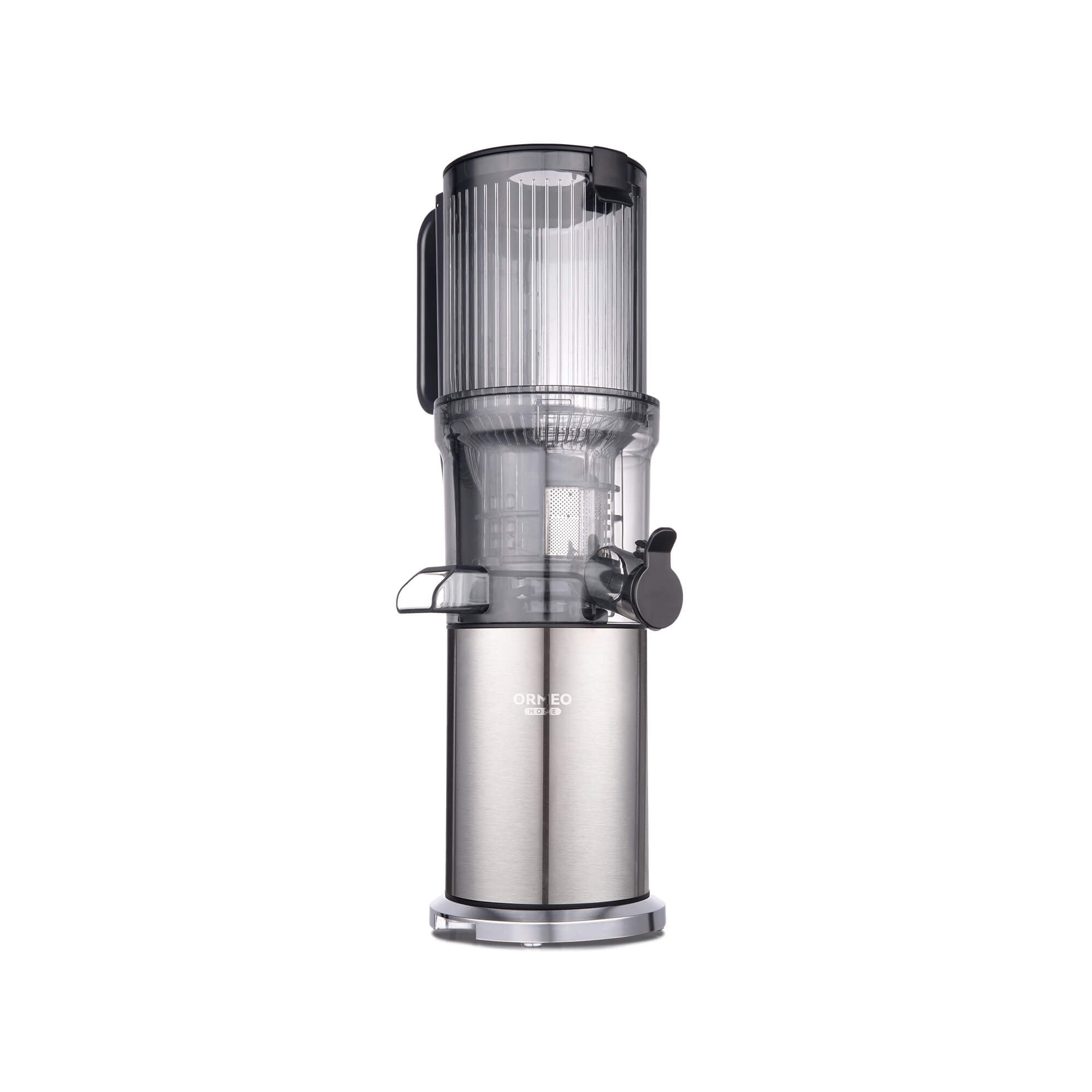
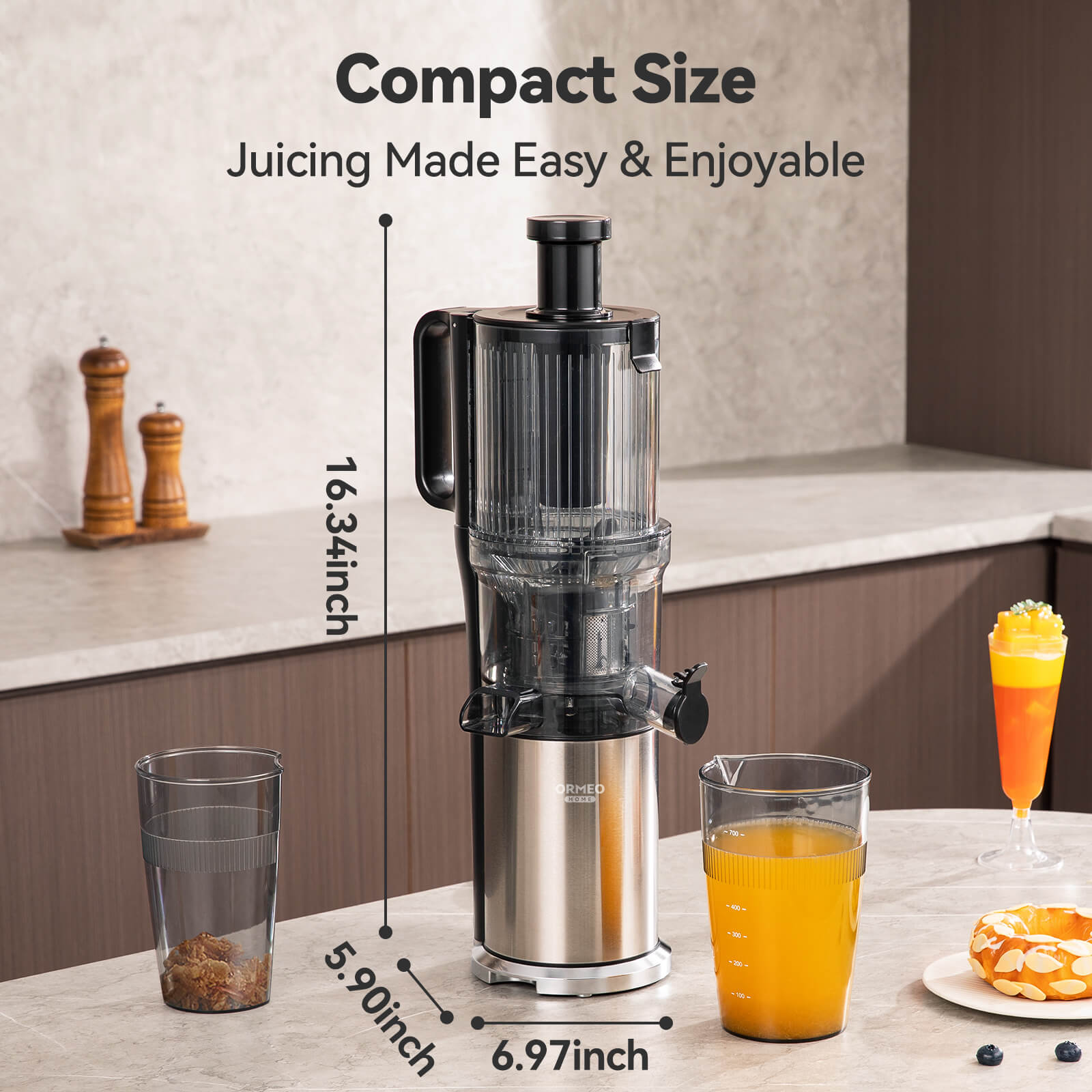
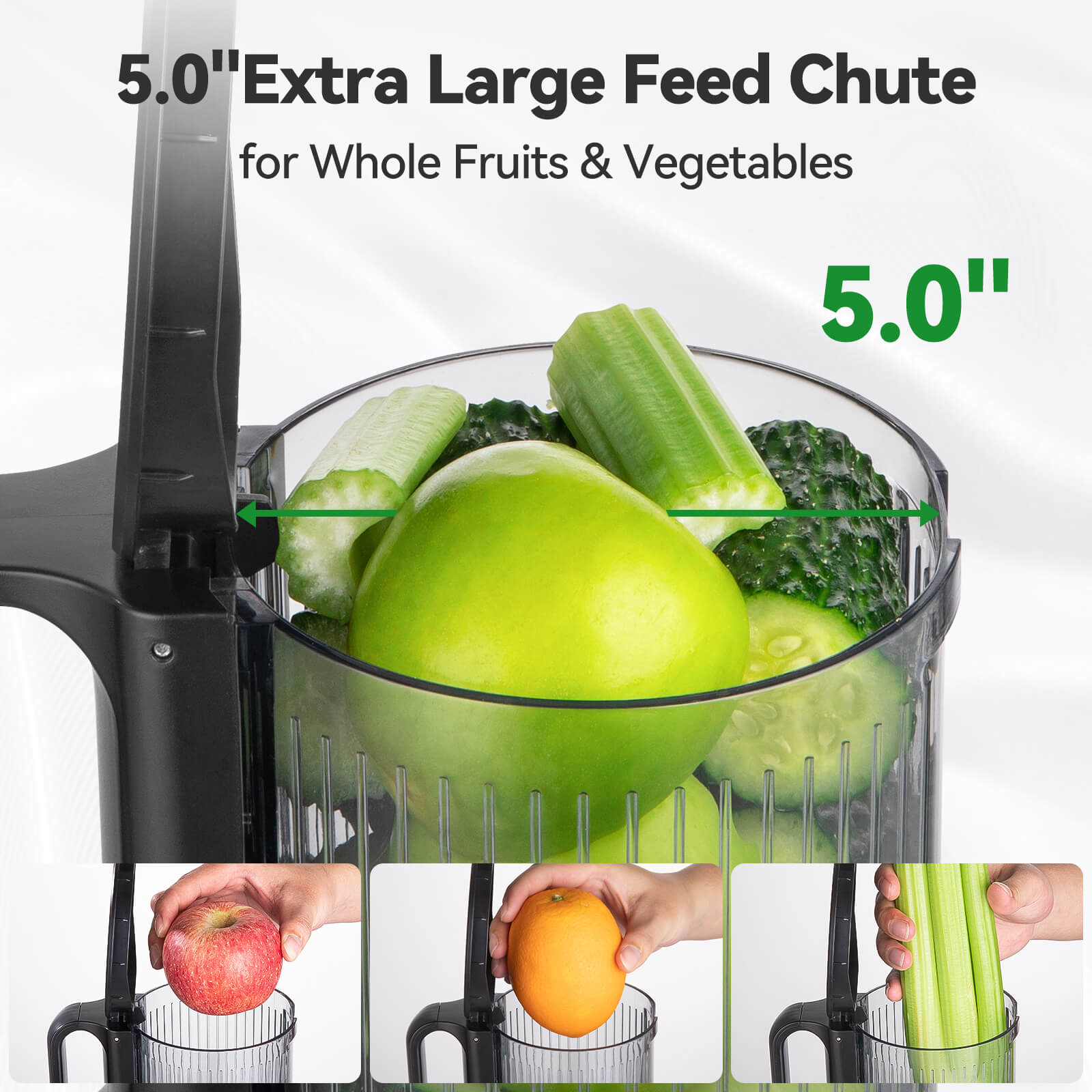
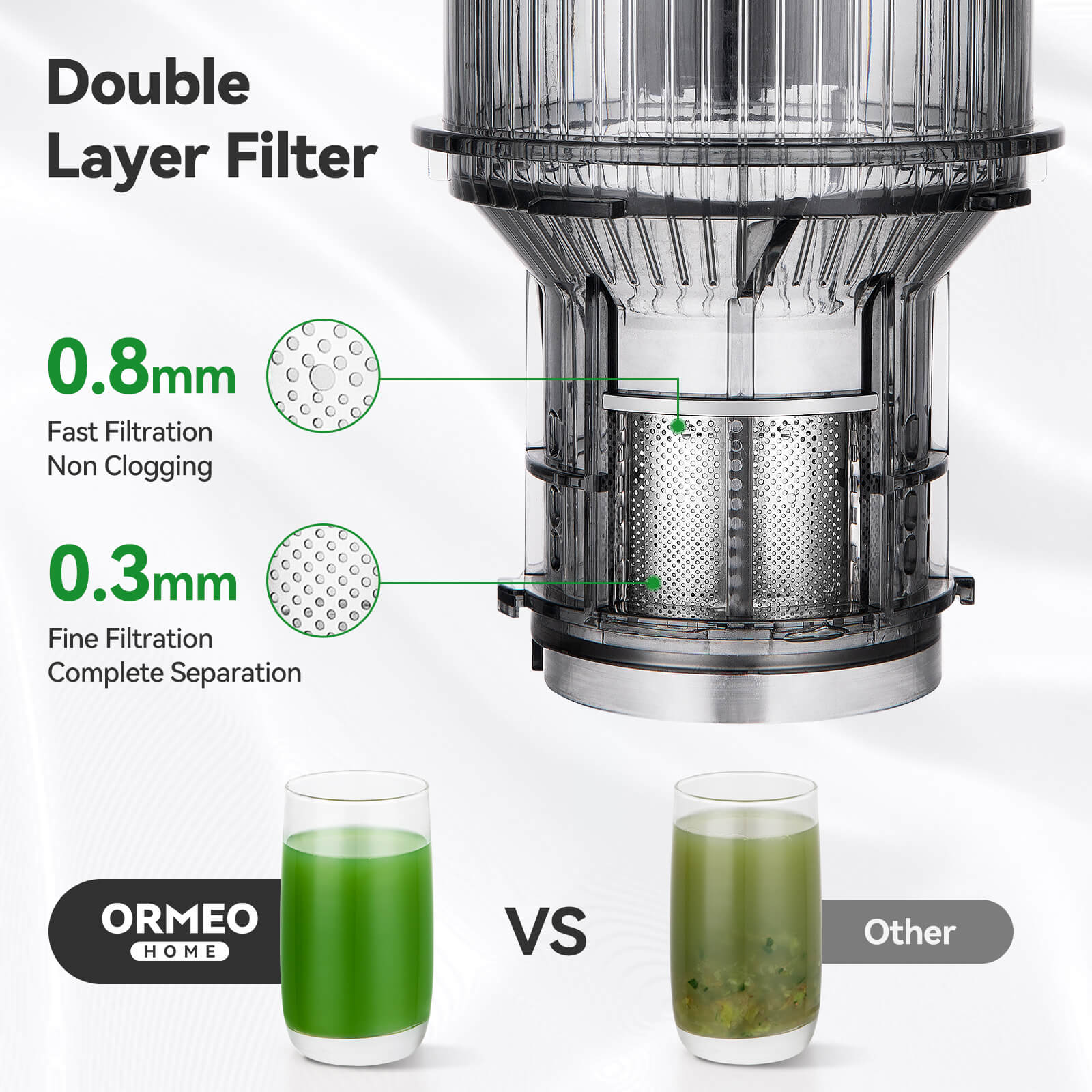
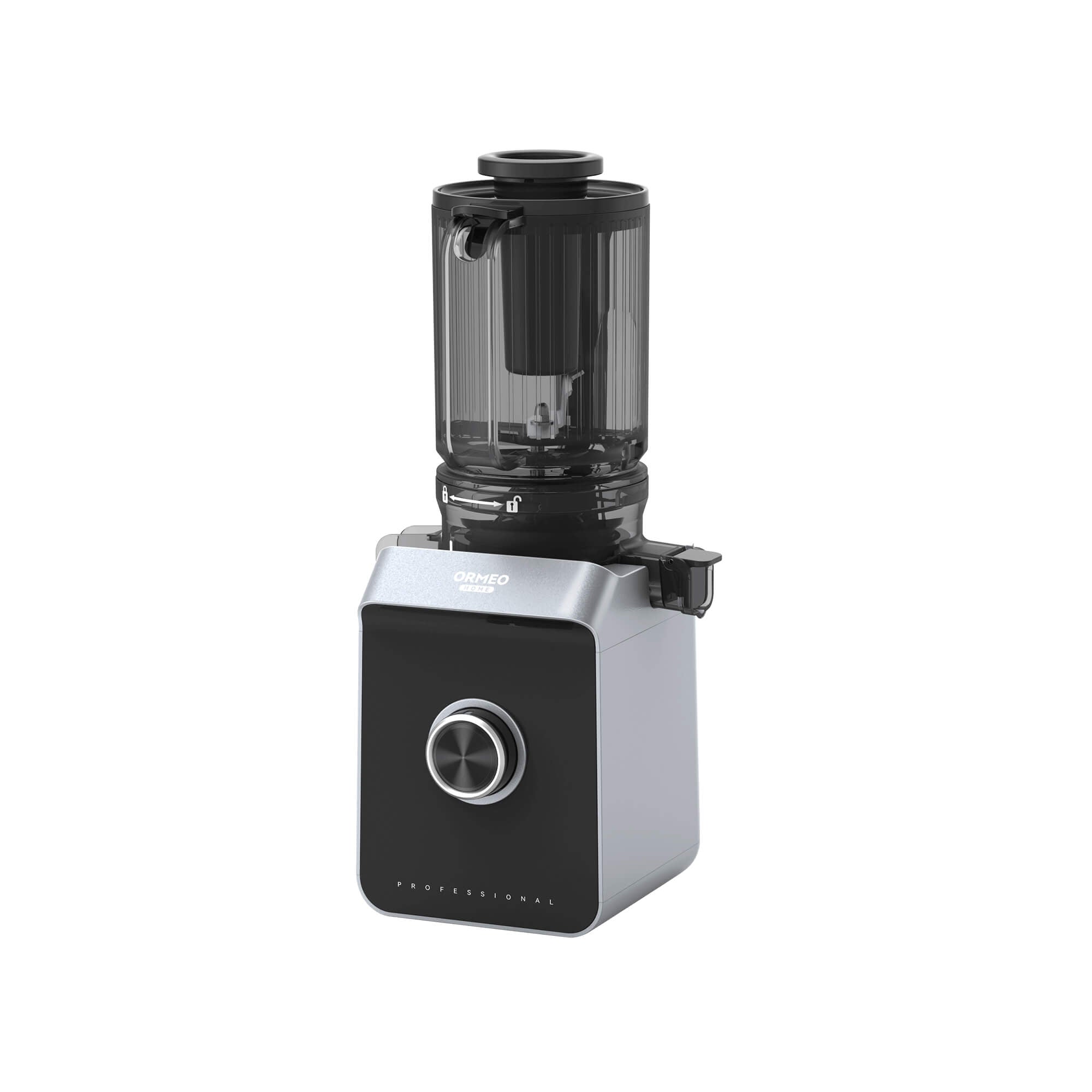
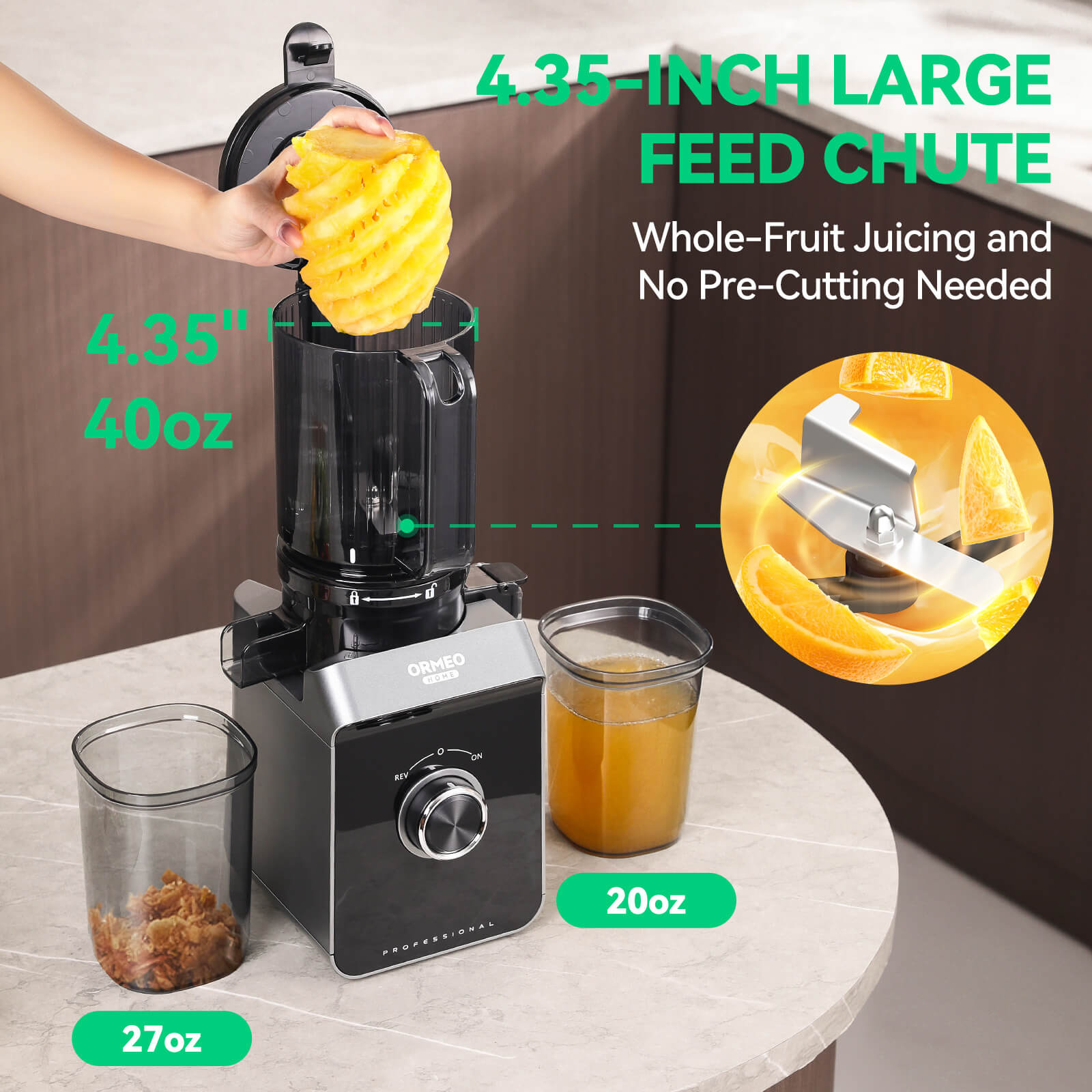

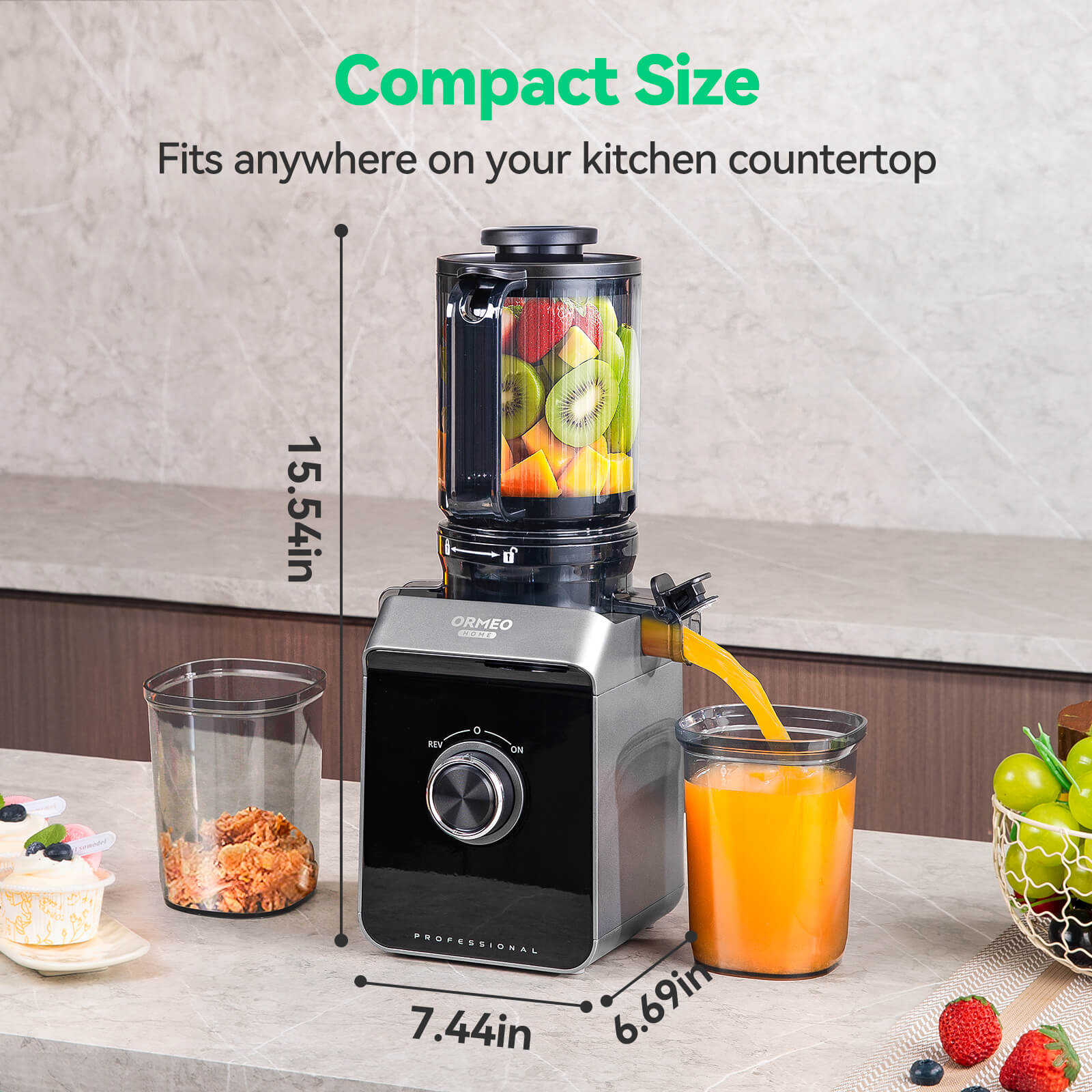
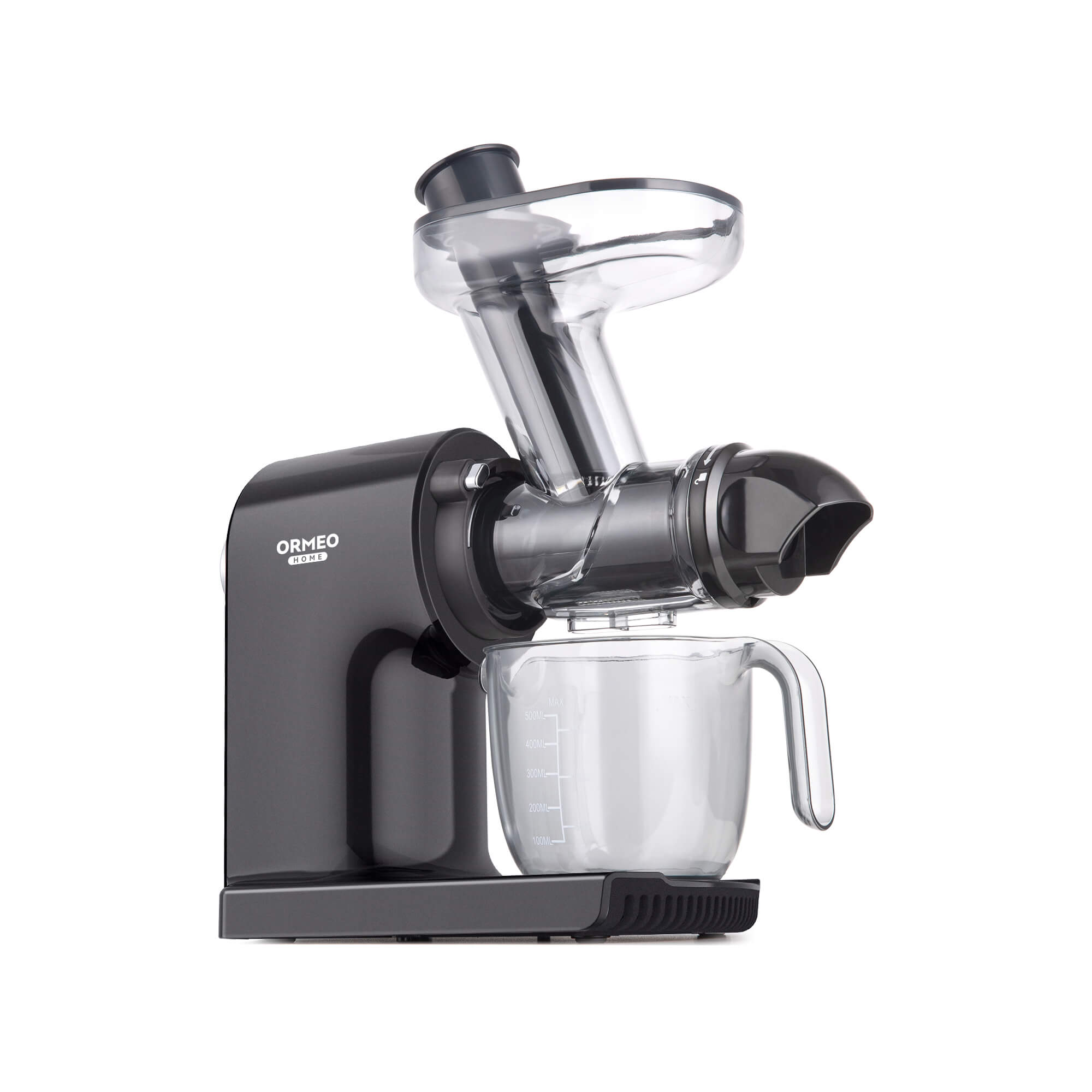
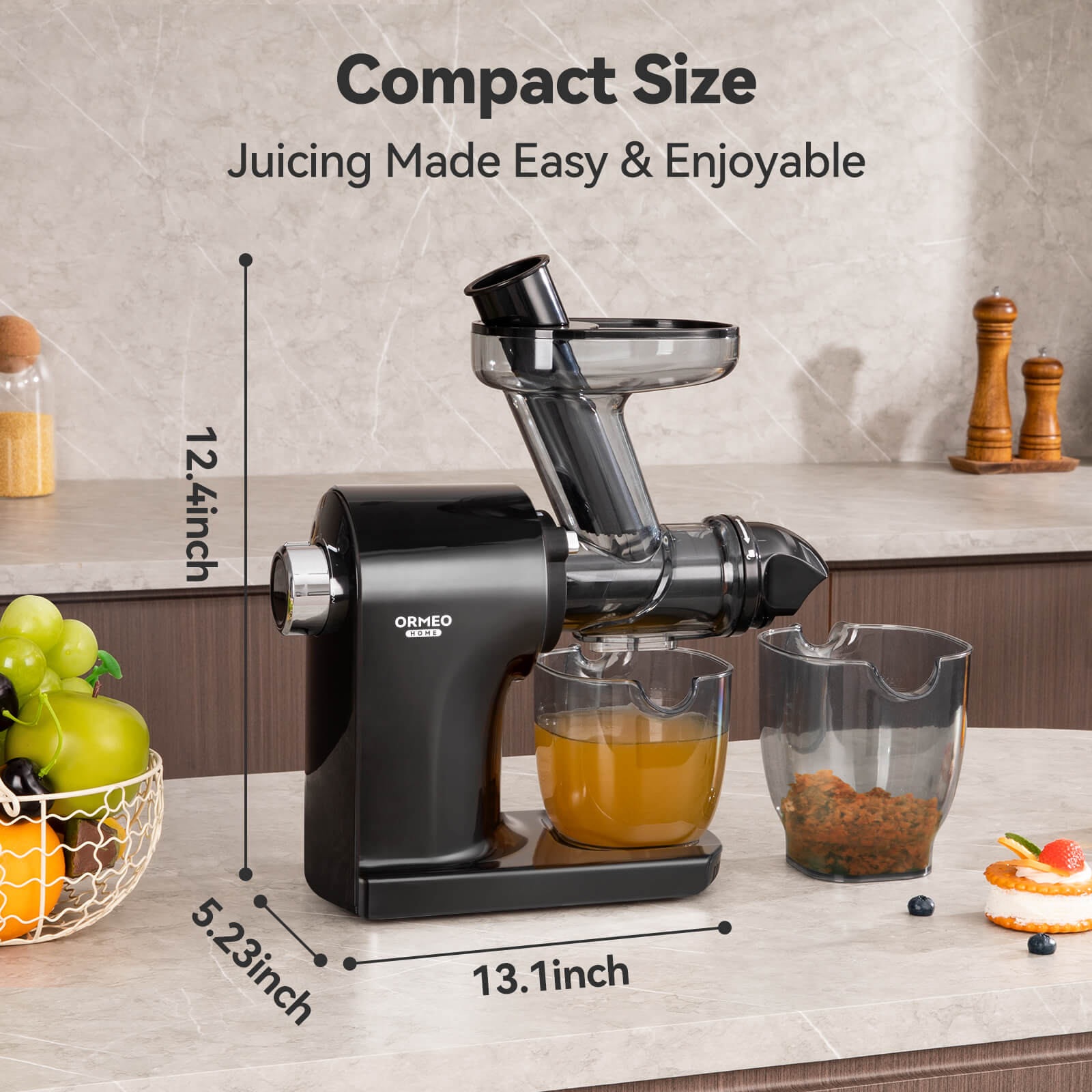
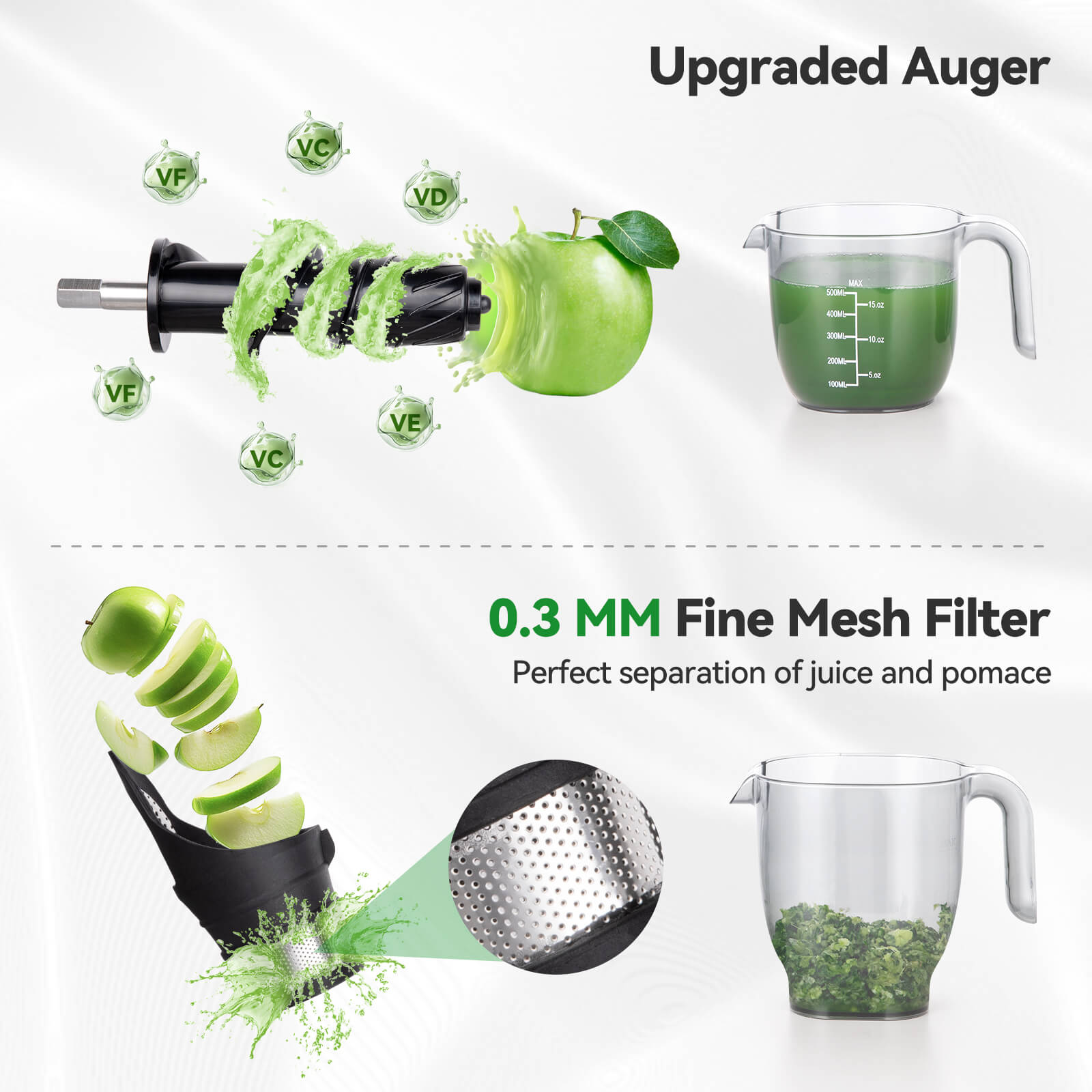
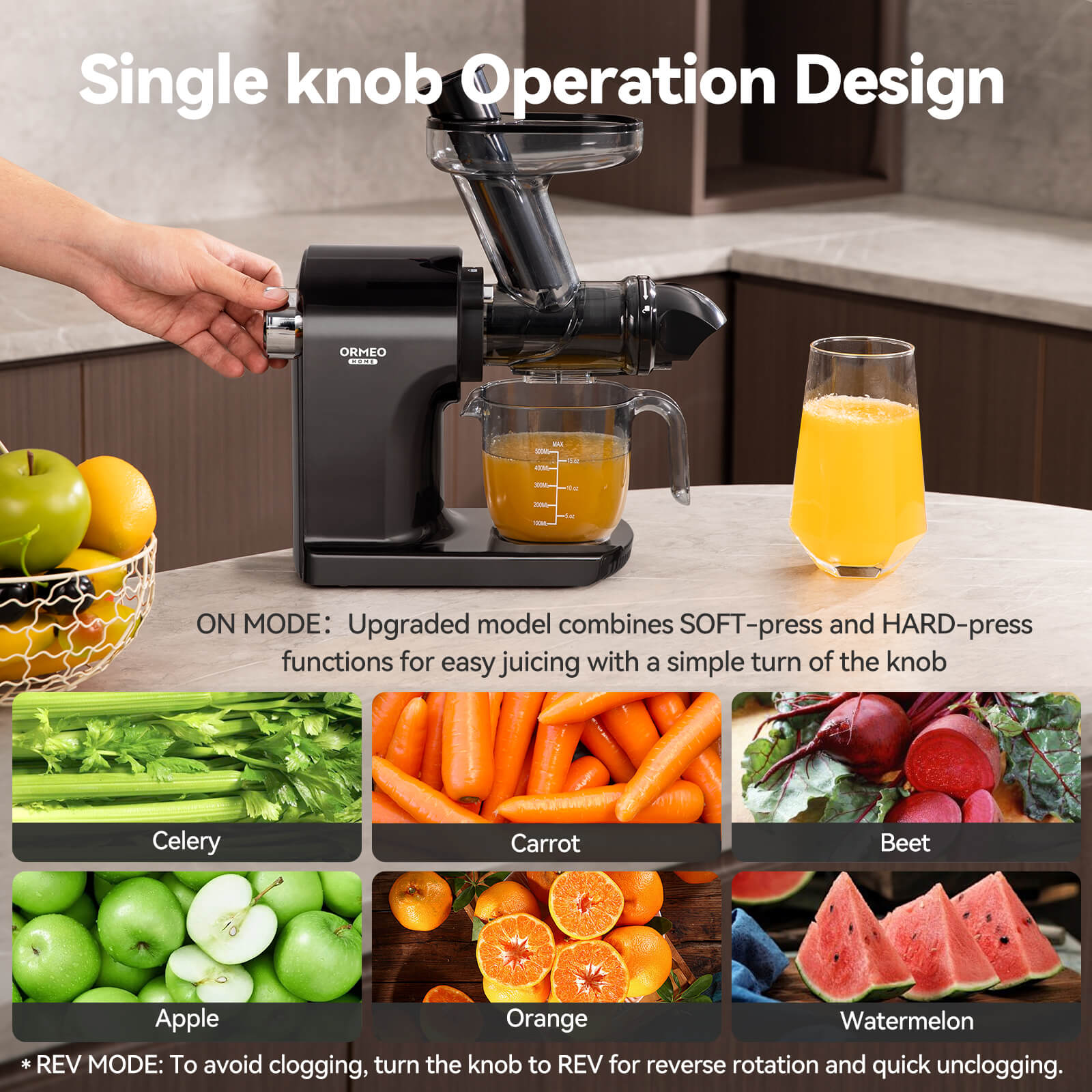
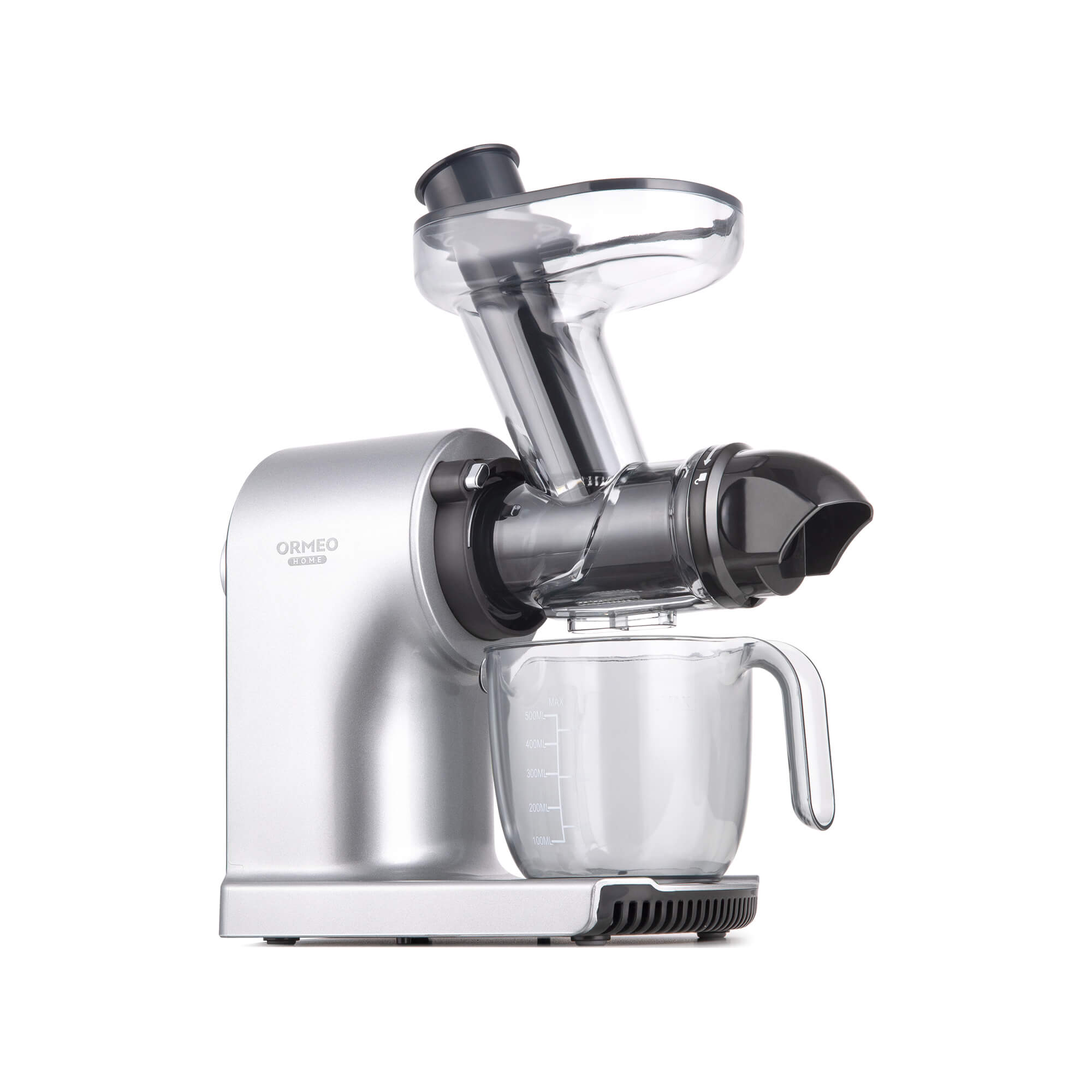
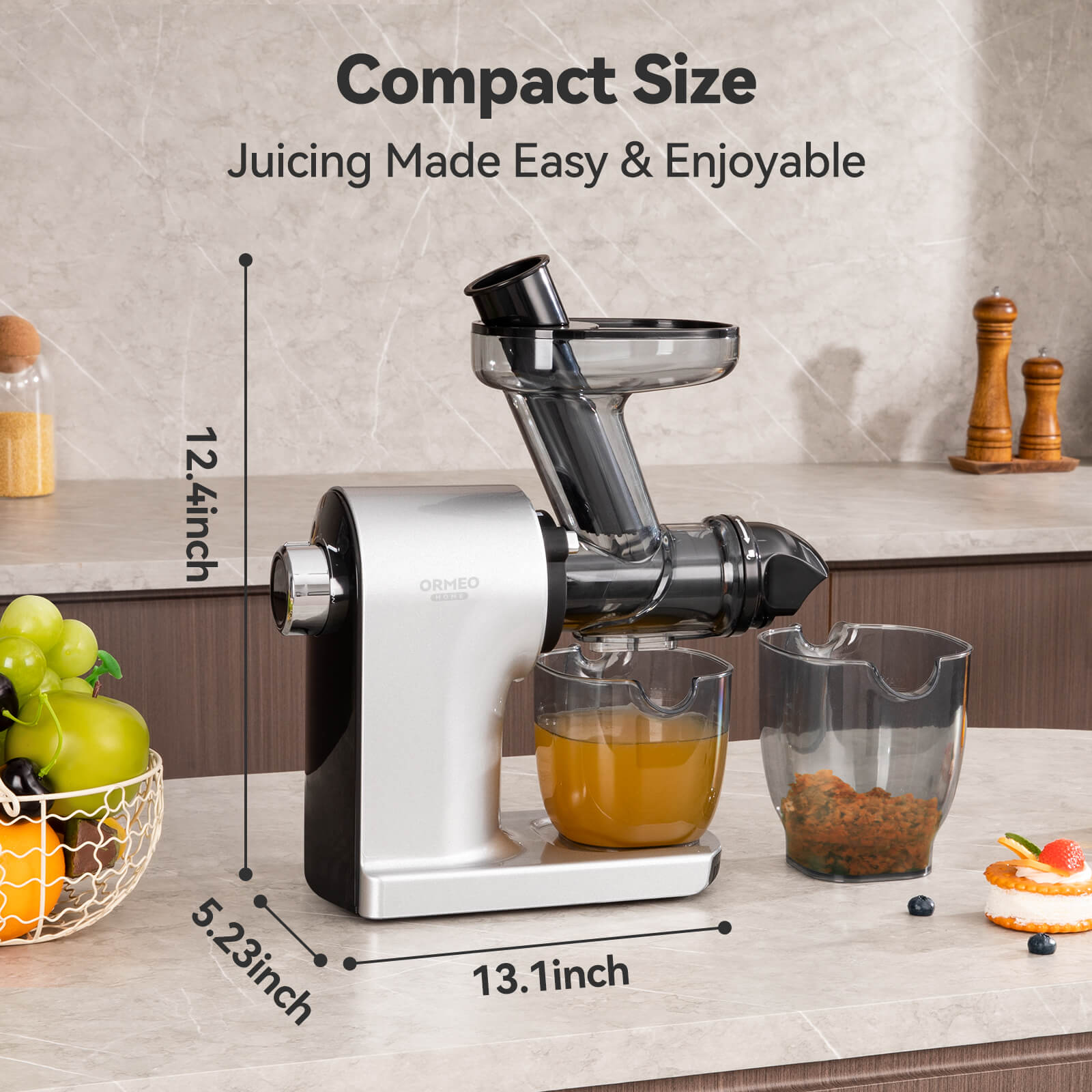
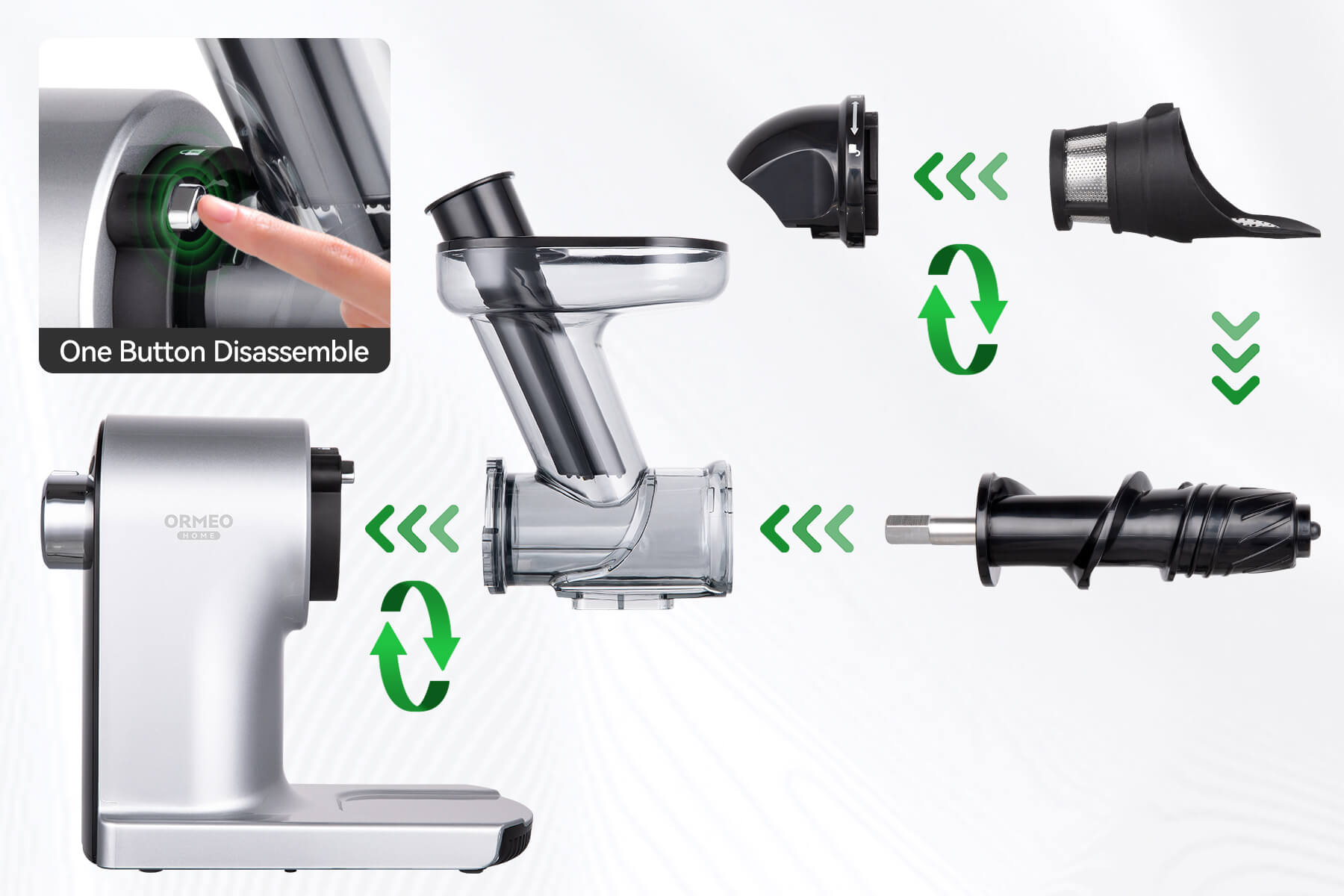
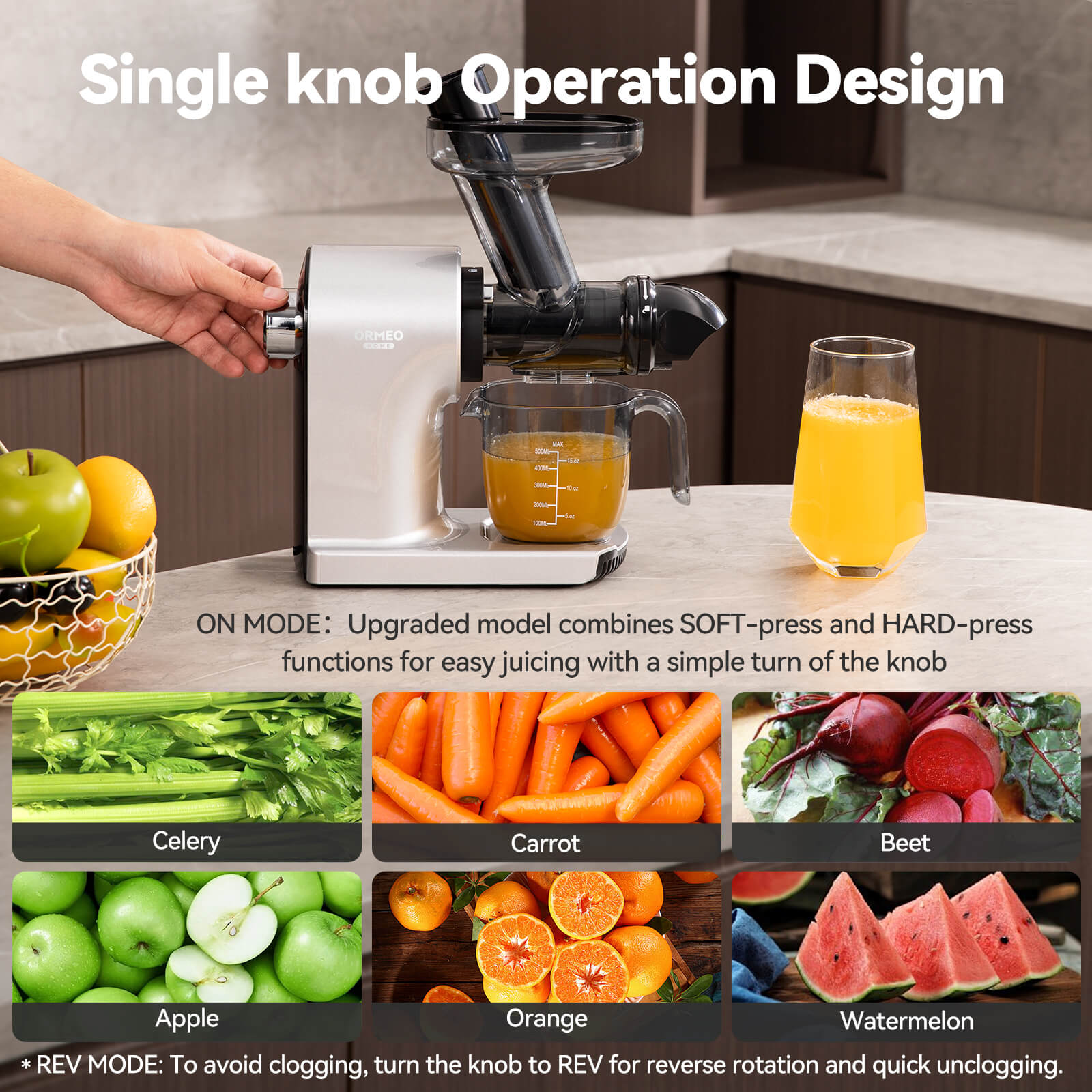
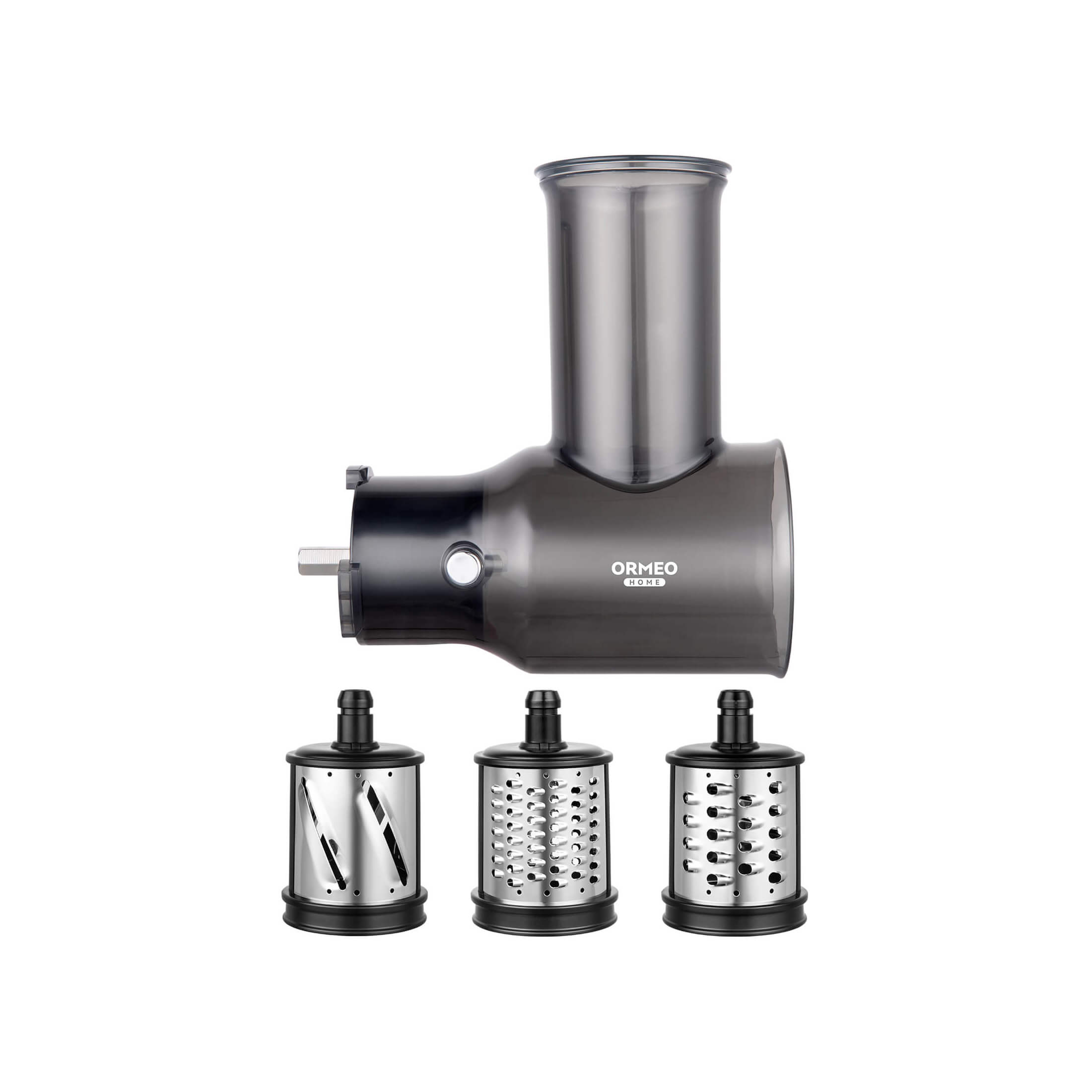

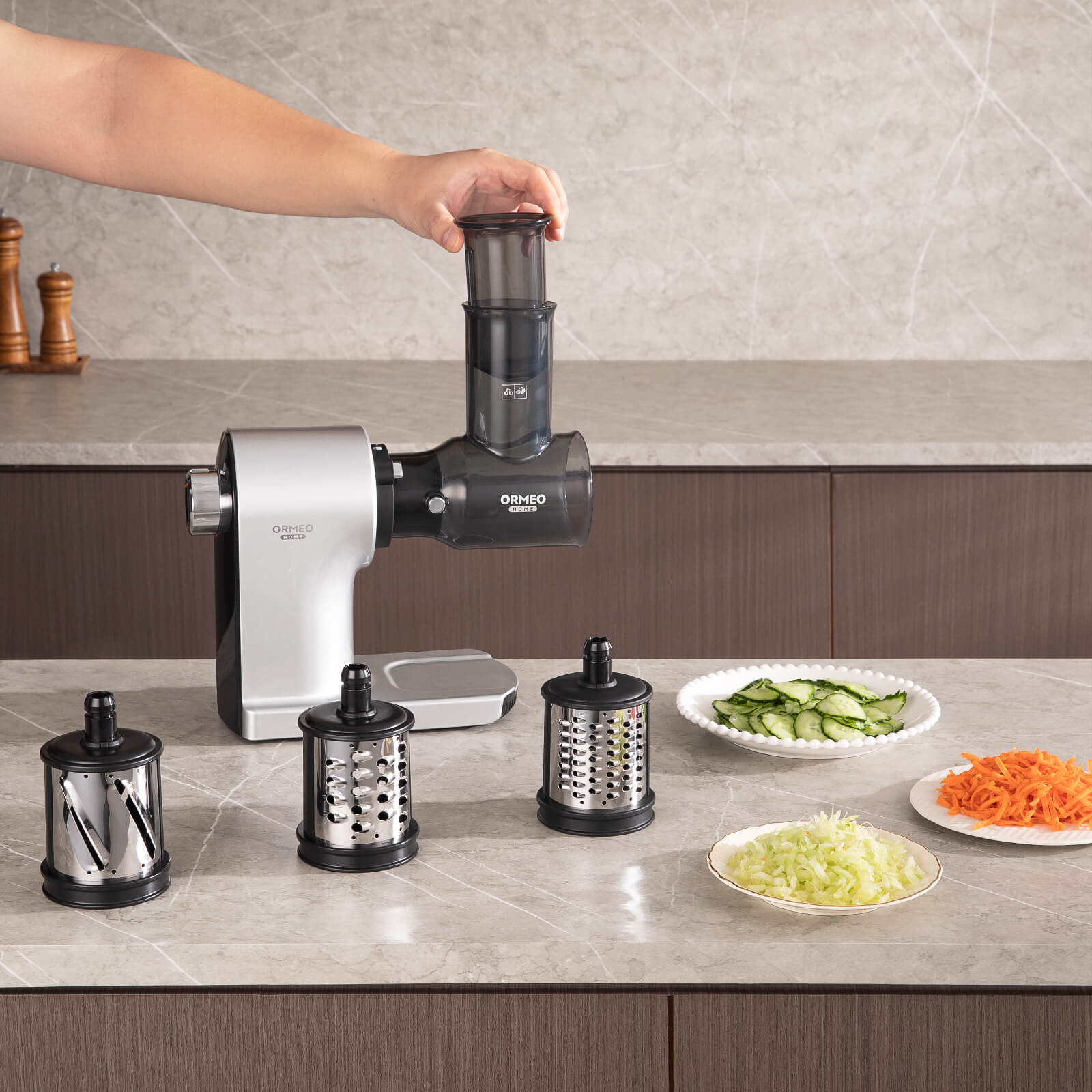
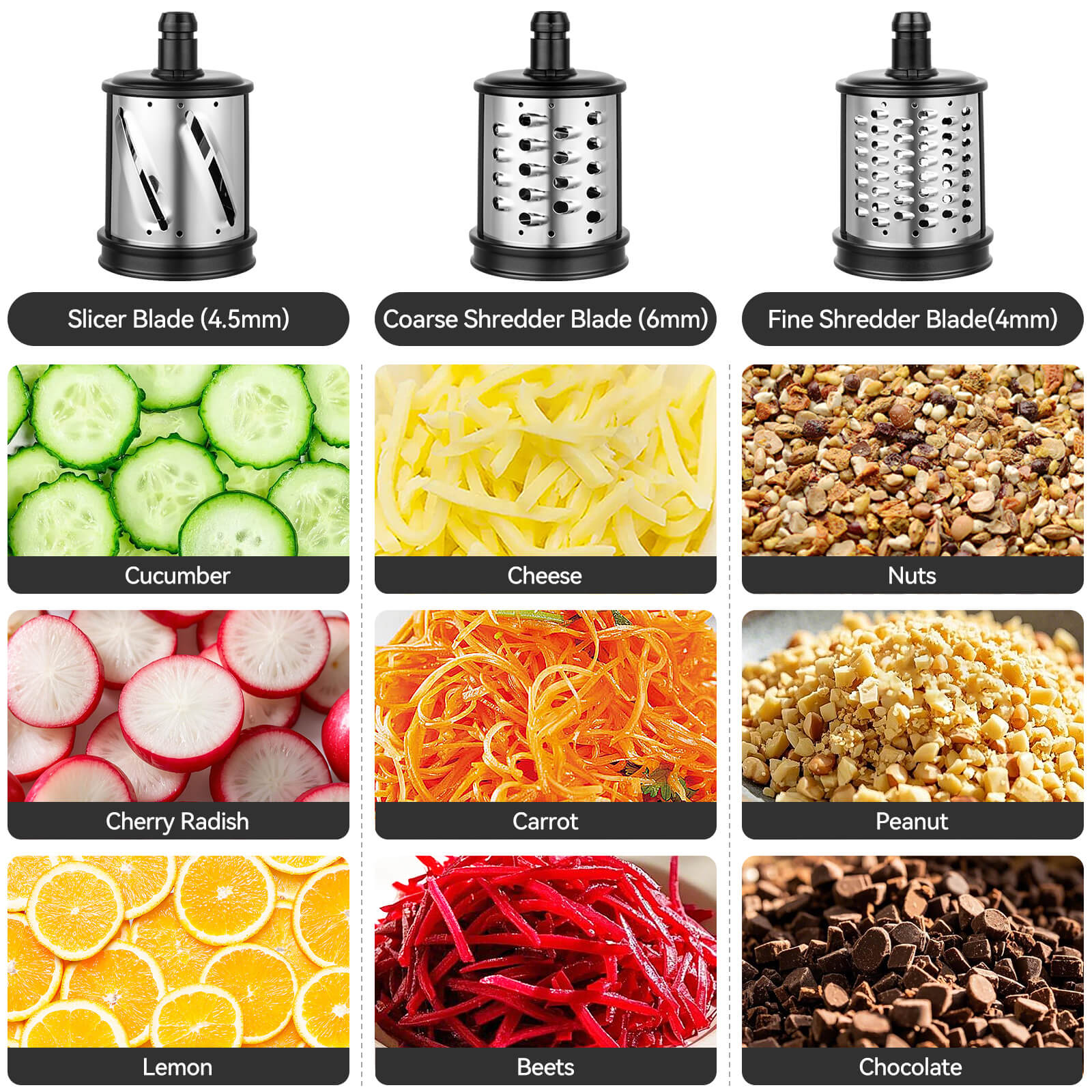
Share:
Discover 2025's Must-Have Juicer with Large Chute
5 Best Juicers for Weight Loss in 2025